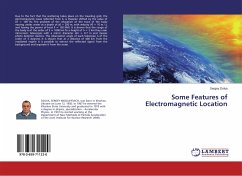
Some Features of Electromagnetic Location
Versandkostenfrei!
Versandfertig in 6-10 Tagen
27,99 €
inkl. MwSt.

PAYBACK Punkte
14 °P sammeln!
Due to the fact that the scattering takes place on the traveling grid, the electromagnetic wave reflected from it, is Doppler shifted by the value of df = 100 Hz. The problem of the relaxation of the trace of the body moving under water at a depth of y0 = 200 m, with velocity V0 = 10 m / s, and having the power of heat P = 130 MW. It is shown that the range of the body is of the order of S = 1000 km To a height of h = 2 km they raise mirror-lens telescopes with a mirror diameter dm = 0.7 m and mosaic photo detector devices. The observation angle of each telescope is of the order of 5 degrees. ...
Due to the fact that the scattering takes place on the traveling grid, the electromagnetic wave reflected from it, is Doppler shifted by the value of df = 100 Hz. The problem of the relaxation of the trace of the body moving under water at a depth of y0 = 200 m, with velocity V0 = 10 m / s, and having the power of heat P = 130 MW. It is shown that the range of the body is of the order of S = 1000 km To a height of h = 2 km they raise mirror-lens telescopes with a mirror diameter dm = 0.7 m and mosaic photo detector devices. The observation angle of each telescope is of the order of 5 degrees. It is shown that at a distance of 400 km from the irradiated region it is possible to extract the reflected signal from the background and separate it from the noise.












